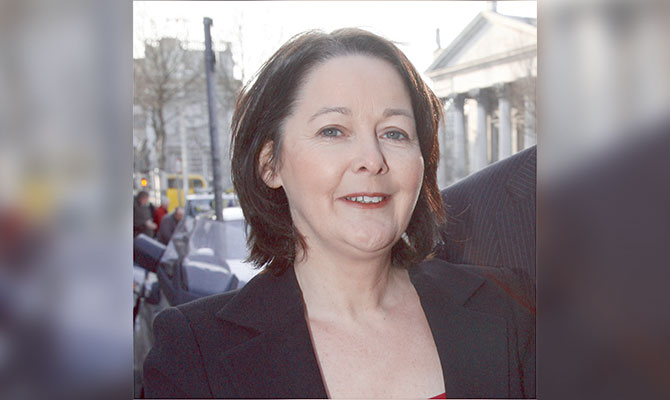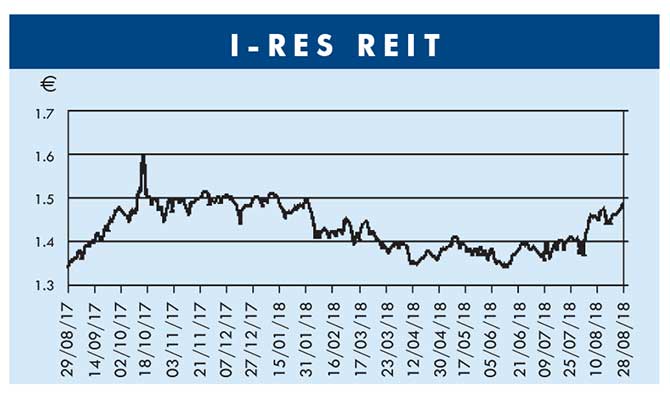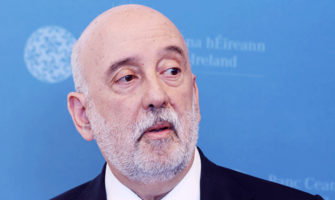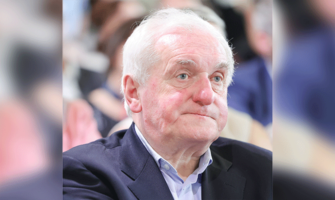
Margaret Sweeney
WITH 2,600 apartments in this fund, Irish Residential Properties Real Estate Investment Trust (I-Res Reit) is by far the biggest residential landowner in the country. It has benefited from the Nama-induced freeze on new properties that has left the country short of 200,000 houses. The shares are on a 10% premium as judged by the market but look set to go only one way – up.
I-Res is the brainchild of the late Tom Schwartz, a huge Canadian residential landlord whose set up the CapReit company in 1997. Schwartz only entered the Irish market when it was in recovery mode, long after the 60% collapse of apartment values from the peak in August 2006 to the nadir in late 2009. By the time I-Res was floated on the Irish Stock Exchange in April 2014, raising E200m, the company had over 338 apartments on its books, mainly in secondary locations. Although I-Res paid up to €250,000 for units in Sandyford, in south Co Dublin, the average price of the total portfolio worked out at €124,000 per apartment, with the average rent then running at €1,100 a month.
Schwartz appointed his Canadian CEO, David Ehrlich, as CEO of I-Res, although this is a misleading title given that I-Res carries out no executive functions. An outside service company, I-Res Fund Management Limited (a subsidiary of the Canadian CapReit group), carries out all the executive functions for a nice little fee of 3% of the gross annual rental income. This cut came to €2.8m last year and there was also a further 0.5% fee based on the group’s net asset value, which last year delivered €1.3m, to give this service company a risk-free income of €4.1m.

It is not as though the service company carries all the cost of running the business, for these are separately imposed on I-Res, which incurred a property operating cost of just on €8m and general administration costs of over €3m – a total operating cost including the service company takeout of €15m. Happily, with Dublin rents so high, the group’s rental income of €45m was comfortably able to carry this.
If the revenue is taken on its own and all capital adjustments are taken out, the group ended up last year with an actual operating profit of €30m – an increase of 20%. After interest costs of E5m, this left the bottom line at €25m.
Looking at the 2017 total value of I-Res Reit’s 2,600 apartments of €750m, the group is earning rents of €45m to give a gross return of 6%. This looks okay but, after running costs and fees, the net return is only 4% – still well ahead of the available return on deposits, money markets, or corporate or government loan stock, but not sustainable when central banks allow interest rates to go back up towards their normal medium level of 5%.
What makes an investment like I-Res Reit attractive is not the net 4% return but rather the increase in capital value, which I-Res last year measured at 5.3%. Adding the two together gives a more compelling 9.3% total return.
This is impressive but only so long as the property values keep going up.
In November last year, an Irish face – Margaret Sweeney – was moved in to replace David Ehrlich as CEO on a salary of €330,000 plus a 15% contribution to a pension fund and an expense allowance of €20,000 pa, as well as the prospect of a 100% annual salary bonus. On top of this, there were two million share options. This is not a bad package given the role.
When floating on the market, other than buying the Marker apartments beside the Marker Hotel in Dublin’s Grand Canal Dock, the only immediate really big deal the company pulled off was the acquisition of the so-called Orange Portfolio from Nama in October 2014.
This was made up of a portfolio sale of 761 apartments, for which I-Res paid €211m, which worked out at €277,000 per apartment. This looks expensive, especially as I-Res probably believed itself to be one of the only credible bidders, sitting on a balance of €200m it had raised in October 2014 as well as the €130m loan facility courtesy of Barclays.
It is hard to understand why Nama sold such a broad portfolio of apartments, running from the expensive units in the Beacon South Quarter in Sandyford to the low-end developments like Bakers Yard on Portland Street North and Charlestown in Finglas. This portfolio could surely have been more successfully disposed of if broken up into its various elements, thus attracting a wider range of investors rather than limiting offers to parties with €200m in their back pocket.
acquisitions
After the Orange Portfolio transaction, the Canadians set up a special purpose vehicle (SPV) in a so-called ‘pipe end agreement’ with I-Res, whereby the Canadians agreed to fund the acquisition of further Dublin apartments with an option for I-Res to buy these when in the funds.
In January 2015, Nama offered another large block for sale – the so-called Rockbrook Portfolio, which contained 270 apartments in the Beacon South Quarter immediately adjoining those contained in the Orange Portfolio.
The SPV had the €90m required to buy these apartments, which worked out at an average price per apartment of €332,000. These were then running with average rents of €1,400 pm, to give a €4.5m rent roll and an immediate 5% additional return.
Rockbrook came with an attractive adjoining three-acre site with existing planning permission for 467 apartments. The I-Res service company has been attempting to vary this planning permission for a slightly different configuration but was turned down, mainly because the 14-storey configuration didn’t fit the skyline of the nearby Sentinel building.
Stripping this €47m site out of the price paid for the block portfolio, the return doubles to 10%.
cash ready

David Ehrlich
Again it is hard to understand why Nama didn’t offer the 270 Rockbrook apartments as one package and the adjoining three-acre site with planning permission for 467 apartments in another package. The two deals would attract very different potential buyers.
I-Res then moved to buy in this portfolio from the SPV by raising a further €250m in March 2015. As a result, when Nama offered up Liam O’Carroll’s huge 442-apartment development at Tallaght Cross West, I-Res had the €83m purchase price ready to pay out. Nama offered these apartments together with a huge built retail space of 180,000 sq ft. On the basis of only the apartments acquired, these work out at €188,000 each. If the retail space was capitalised and worked out even at a tiny €12 per sq ft, this would generate a rent roll of €2m and represent a capital value of €40m.
Taking this into account, the actual price per apartment works out at €97,000. These would have been well within the target price range of the likes of the Comer Brothers, but the inclusion of the big chunk of retail space certainly complicated matters for interested parties.
Recently, I-Res Reit’s growth has slowed down, although €30m was paid out on the Hansfield Woods scheme in Ongar, D15. This was a 4.5-acre site purchased for €7m, after which I-Res contracted the housebuilder to build out the 100 houses on the site for a purchase price of €23m.
This total €30m spend brings the average house unit price here to €300,000 – relatively high for a development D15, but it is adjoining a mainline railway station and I-Res hopes to rent these out at an average €1,750 per month, which if achieved will generate a 7% yield.
In May this year, I-Res acquired a new development of 128 apartments in Hampton Wood in Finglas for €40m. This works out at €312,500 per apartment, again a high level for Finglas but I-Res hopes to charge €1,630 pm, which would deliver a gross yield of 6.25%.
The nice thing for investors in I-Res is that not only is the group meeting the tax requirements for a Reit, which requires 85% of net rental income to be paid out in dividends, but I-Res shareholders benefit from this as, rather than pay out the 4% return earned last year, the group actually paid out 5.2%. At the current share price of €1.46, this still gives shareholders a reasonable return of 3.5%, which is made up of part income and part capital gain.
As the asset value per share works out at only €1.34, the market has valued these shares on a 10% premium, understandable in the circumstances given Irish investors’ appetite for residential property.
At this fair valuation of the assets inside the company, the average value per apartment works out at €308,000 and the average rent works out at €1,539. This means that the apartments are being valued on an average 6% gross yield.
It is easy to see why Irish investors find I-Res shares attractive and they are set to rise further, particularly once I-Res gets full planning permission for its 450 high-end apartments in Sandyford.
Reference the Market Abuse Regulations 2005, nothing published by Moneybags in this section is to be taken as a recommendation, either implicit or explicit, to buy or sell any of the shares mentioned.




















